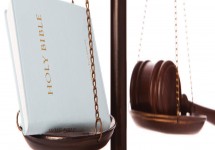Jury Trials – A Right? A Privilege? Or An Obligation?
On 11 April 2012 the New South Wales Court of Criminal Appeal heard and appeal from a decision to grant a Muslim man a Judge only trial. The man had argued that there was a negative sentiment in the community towards Muslims and specifically towards those Muslims who held ‘extreme’ views. He was concerned that as a result of these negative community sentiments any jury empanelled to hear his case would be biased against him on the basis of his religious beliefs. On the face of it this claim seems a little far-fetched – until the facts of this case are added to the mix.
In this case the man was accused of assaulting and attempting to murder his sister-in-law by holding her over the railings of a multi-story car park. The reason for the alleged behaviour was that she had taken his wife to the breach without his permission. His beliefs included the ‘right’ to control where his wife went and with whom and in taking her to the beach his sister-in-law had violated this ‘right’.
When these facts are added the man’s concerns become more real. It is one thing to say that a jury would be prejudiced against someone with extreme religious views where the crime they are accused of has nothing to do with those beliefs. In this case his extreme religious views are directly related to the crime and as a result his concerns now relate directly to things the jury will need to consider.
The Court of Criminal Appeal upheld the States appeal – The man could not have a judge only trial. The case raises 2 important issues. First could the religious beliefs of an accused and potential bias of the jury against those beliefs ever be enough to warrant a judge only trial and second what do we mean by the ‘Right’ to trial by jury.
In relation to the first of these issues there can be little doubt that there at least some negative community sentiment against Muslims generally and Muslims who hold extreme religious views specifically. Reports such as Freedom of Religion and Belief in 21st Century Australia and Ismae by the Australian Human Rights Commission have found there to be negative sentiment towards Muslims in the Australian community. So it would seem that the Man’s concern that jurors might be prejudiced against his religion has at least some basis. Although it would not be fair to imply that all juror would be biased in this way.
So on the face of it his concerns are justified and the judges of the Criminal Court of Appeal are wrong. However this does not answer the question entirely. If this man had been granted a Judge only trial on this basis – could this open the floodgates to other claims of this nature. There is measurable negative community sentiment towards many different groups in society. Think about sentiment towards Scientologists, Aboriginal Australians and in some sectors of the community gay and Lesbian people (I am sure you can add more to this list). Could all of these people request a Judge only trial on the bias that the jury might be prejudiced against them because of their religious beliefs, cultural identify or sexual orientation.
The second issue relates to jury trials and a right. Even here in Australia where we have relatively few enshrined Human Rights we are familiar with and expect to be protected by the right to a trial by jury (although this right has been limited). The question is when is a right an obligation and who owns this right anyway. I would argue that a right includes the right not to take advantage fo that right. So the right to a freedom of speech includes the right to say nothing. The right to freedom of religion includes the right not to practice any religion. So in theory the right to a trial by jury includes the right not to have a jury trial. So if I am right the Court of Appeal is wrong. Perhaps not. Consider who hols this right. Most rights are held be an individual against the state (or against other individuals). But could the state hold that right on behalf of the community at large or on behalf of an individual who cannot exercise it for themselves.
In a criminal trial the victim does not prosecute the offender – instead the State stands in their shoes and carries out the prosecution. There are good reasons for this. One possibility is that the victim as well as the accused has a right to trial by jury. The accused to have their case heard by a panel of the peers and the same fro the victim. Since the victim does not prosecute a criminal case the only person who can exercise this right is the State. So even where an accused wishes not to have a jury a jury may still be used because it is the victim exercising their rights against the accused.
To be honest I have not yet made up my mind as to whether the Court of Criminal Appeal got it right. As a lawyer my gut is to say – well a court made the decision so it is the law and I must accept it. The academic in my says I should question the decision. Has this man’s right not to have a jury trial been violated in favour of a victim who is not carrying out the prosecution anyway or (even worse) in favour of the state. Should the fact that the community in general has a negative sentiment against a person allow them to have a judge only trial? Is the case even stronger where that negative sentiment is backed up with research? Or is that taking things too far?








